Abstract
The contingency between responding and stimulus change on a chain variable-interval 33-s, variable-interval 33-s, variable-interval 33-s schedule was weakened by interposing 3-s delays between either the first and second or the second and third links. No stimulus change signaled the delay interval and responses could occur during it, so the obtained delays were often shorter than the scheduled delay. When the delay occurred after the initial link, initial-link response rates decreased by an average of 77% with no systematic change in response rates in the second or third links. Response rates in the second link decreased an average of 59% when the delay followed that link, again with little effect on response rates in the first or third links. Because the effect of delaying stimulus change was comparable to the effect of delaying primary reinforcement in a simple variable-interval schedule, and the effect of the unsignaled delay was specific to the link in which the delay occurred, the results provide strong evidence for the concept of conditioned reinforcement.
Full text
PDF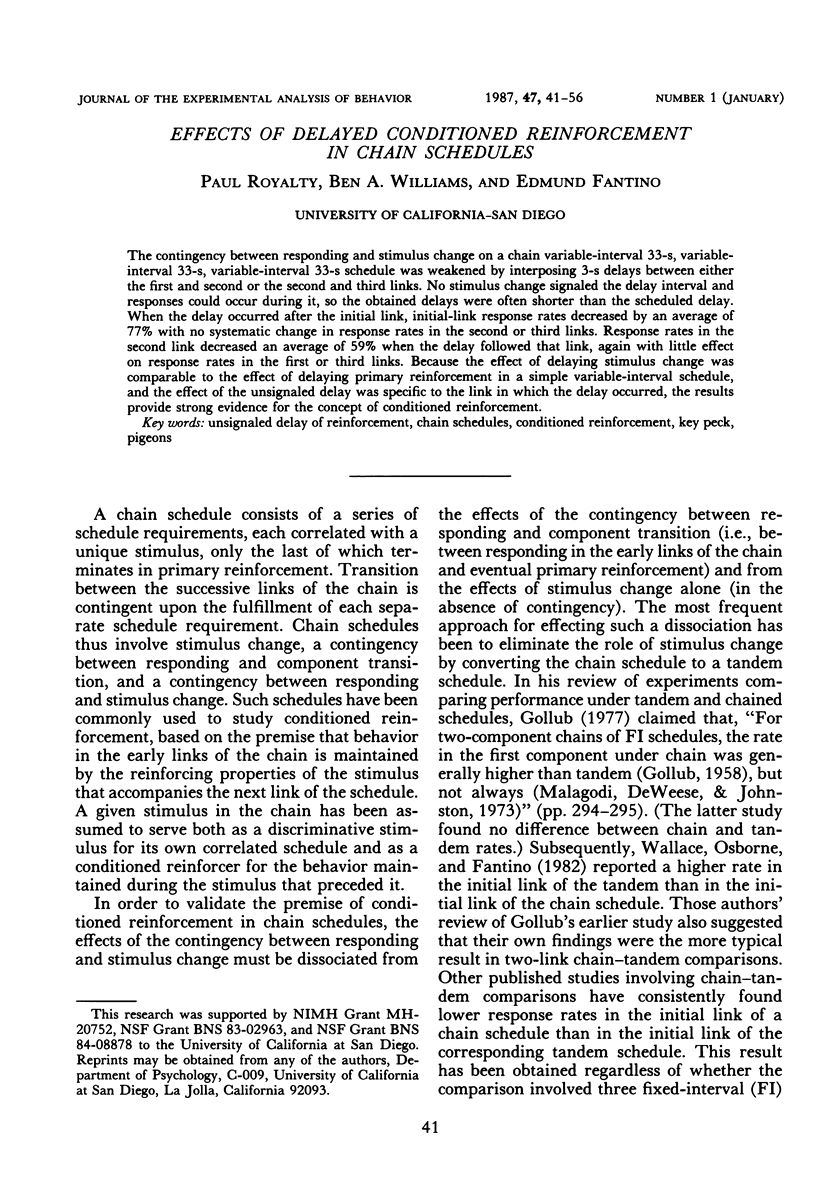
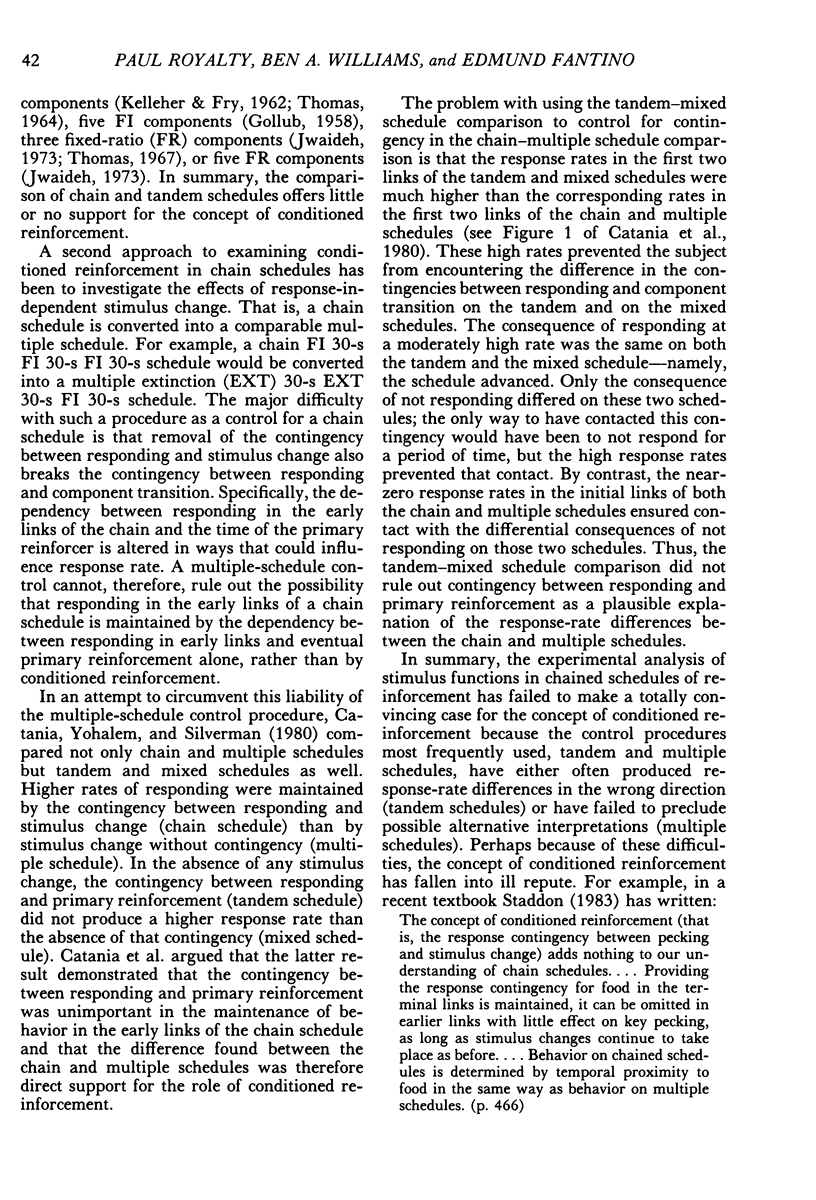
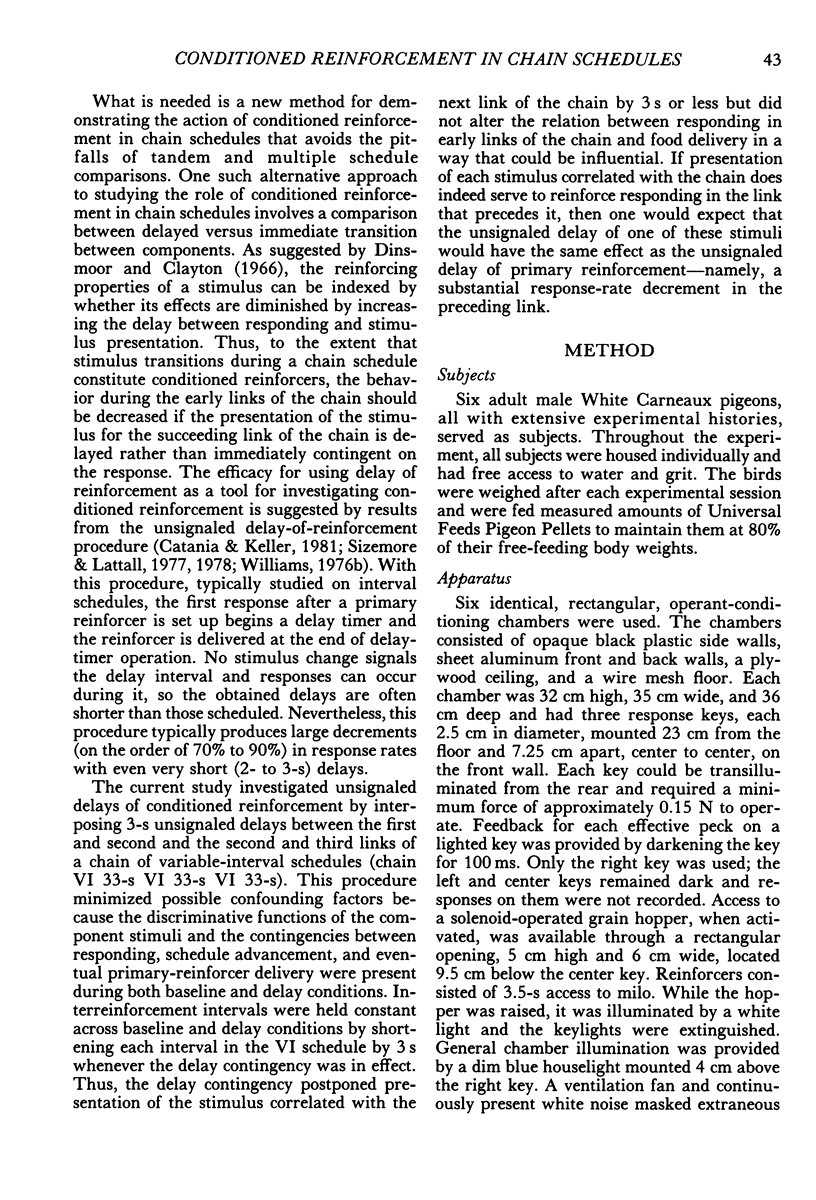
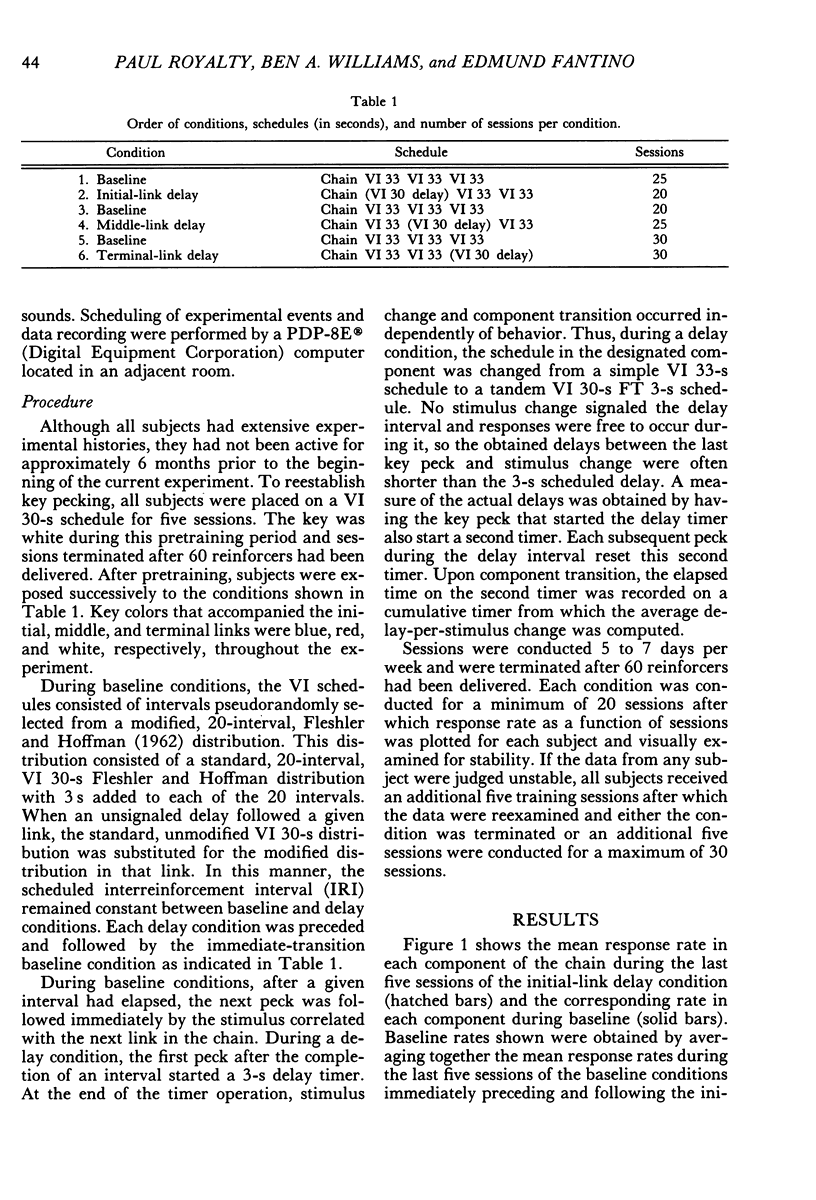
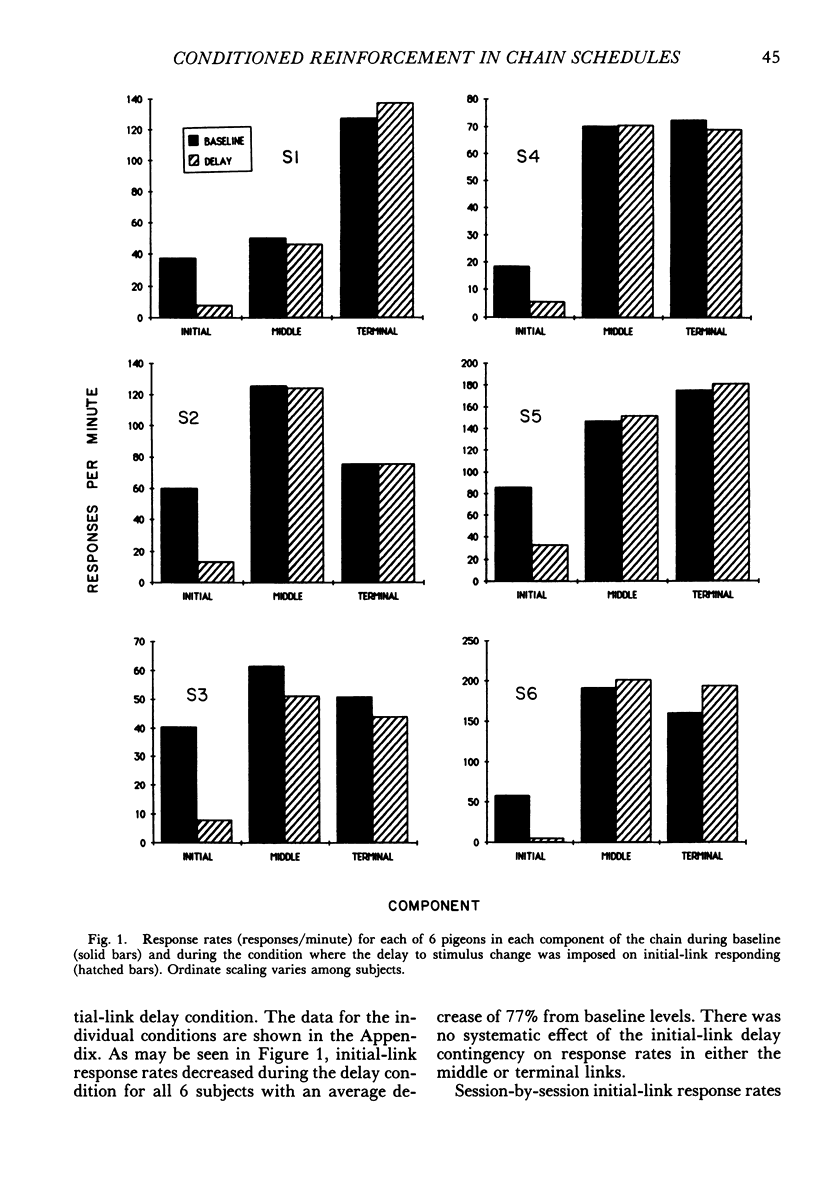
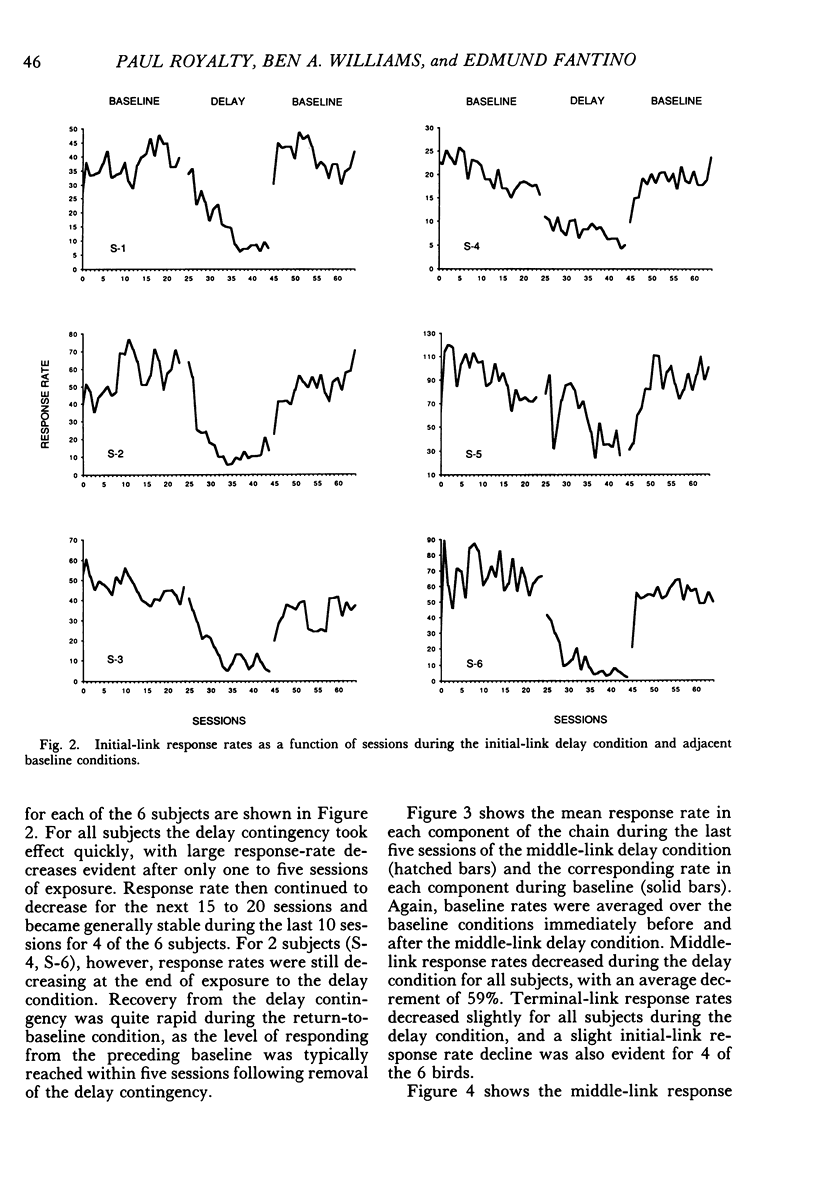
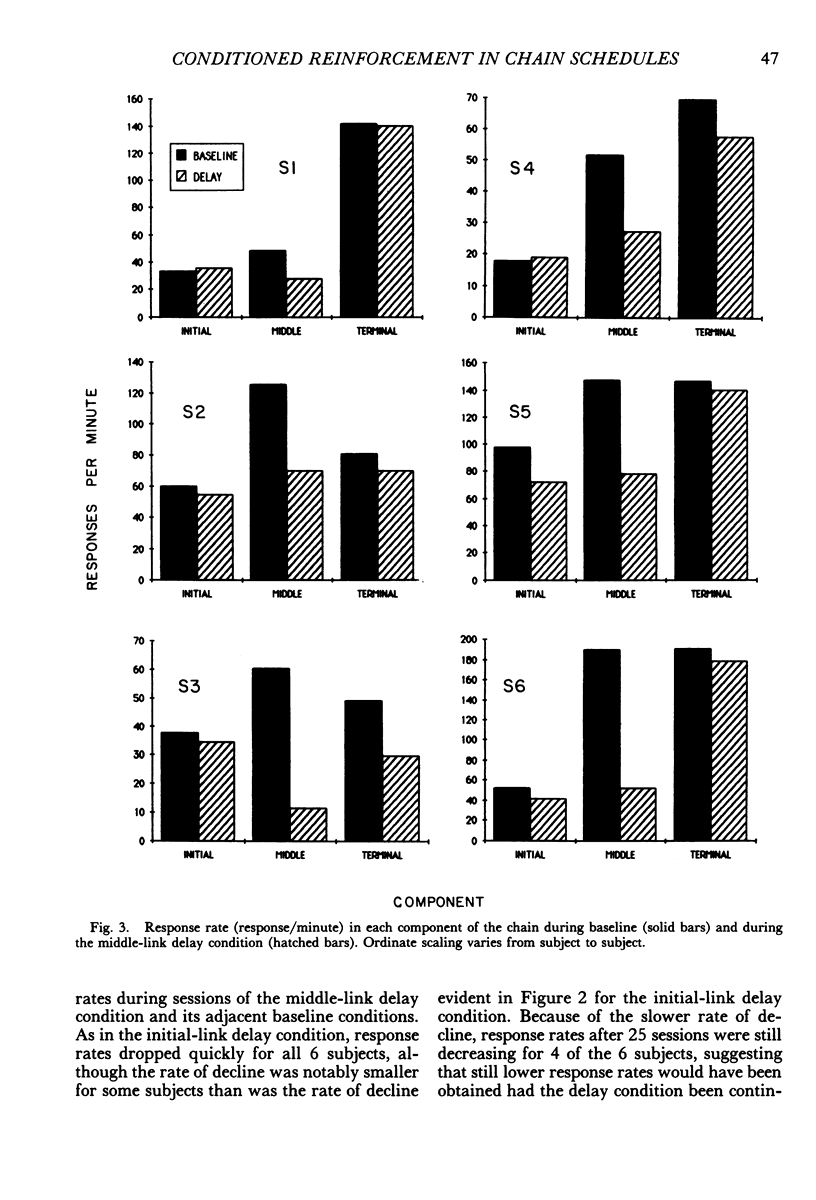
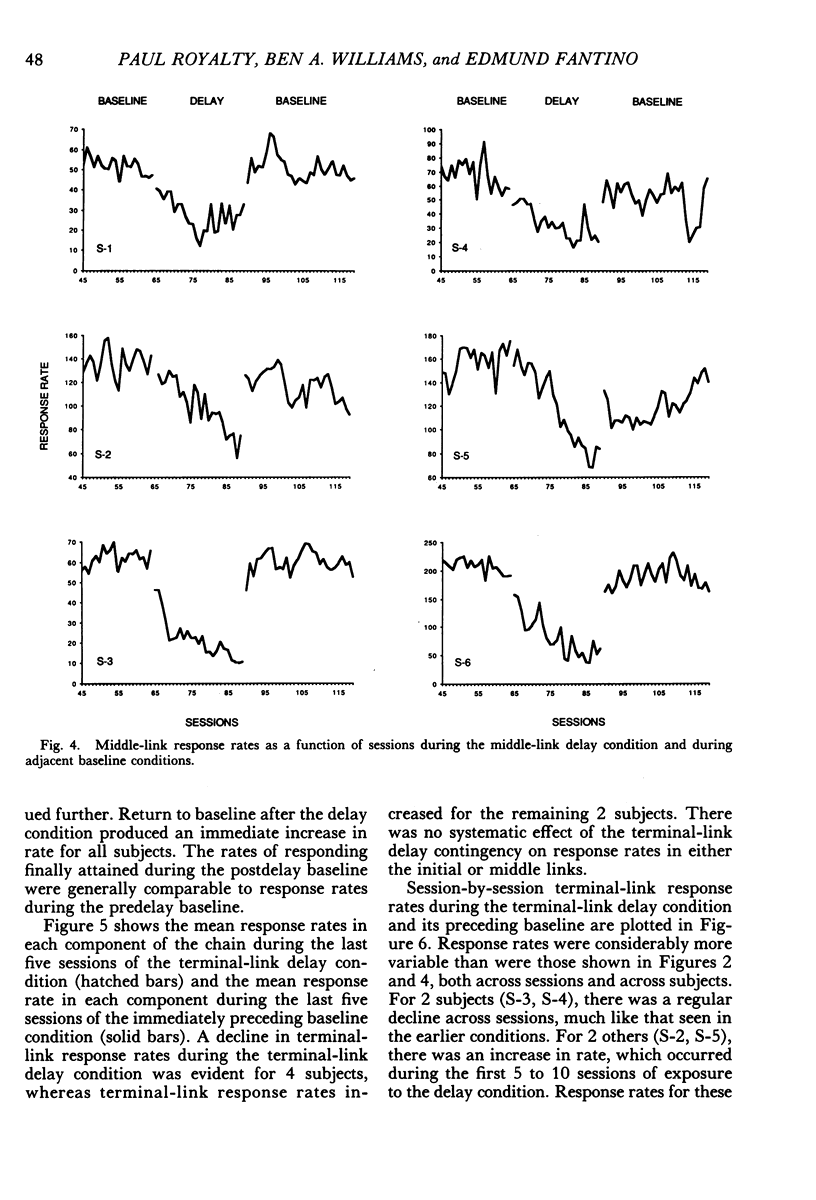

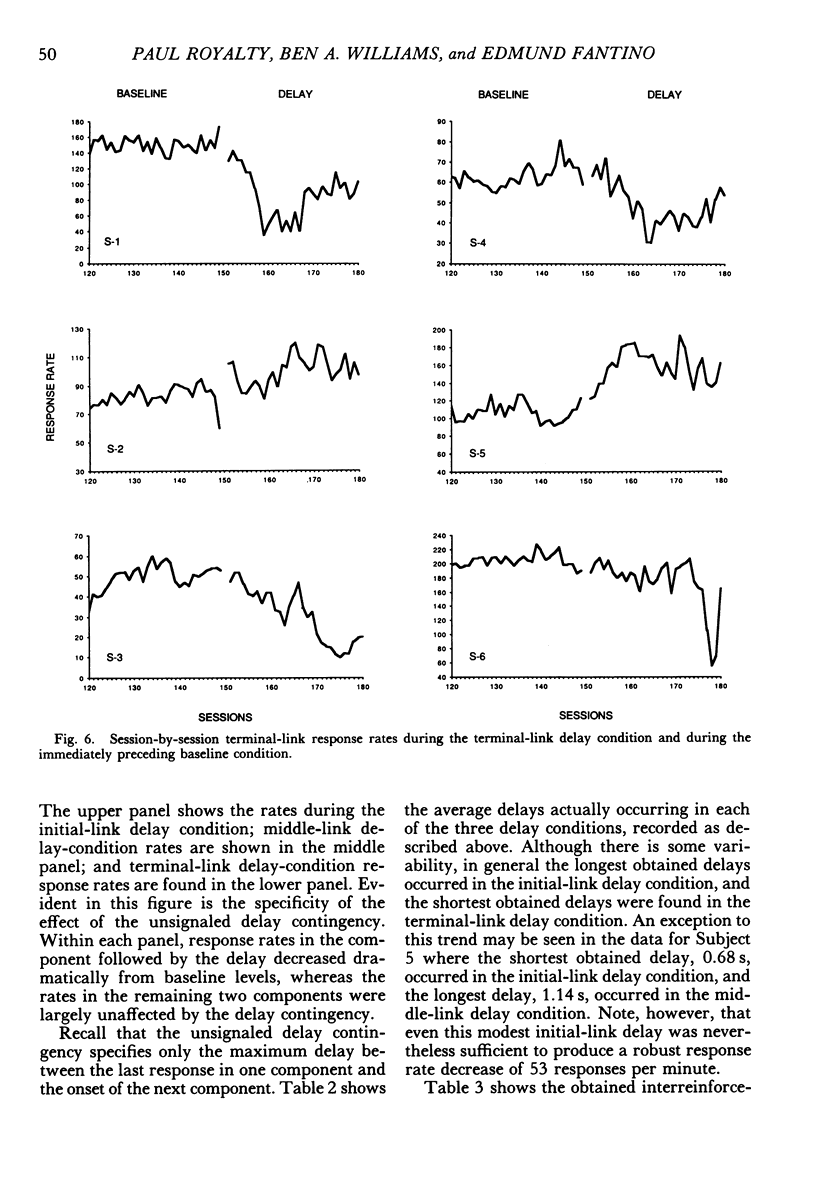
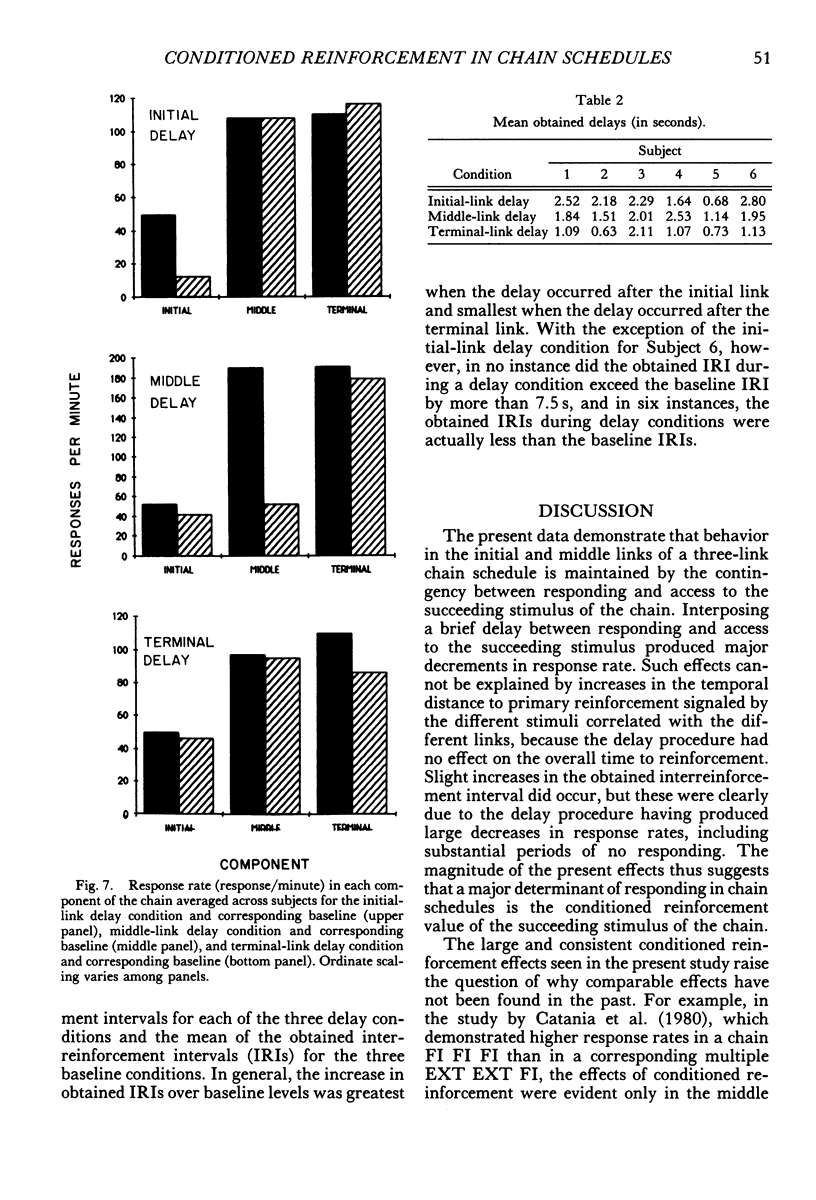
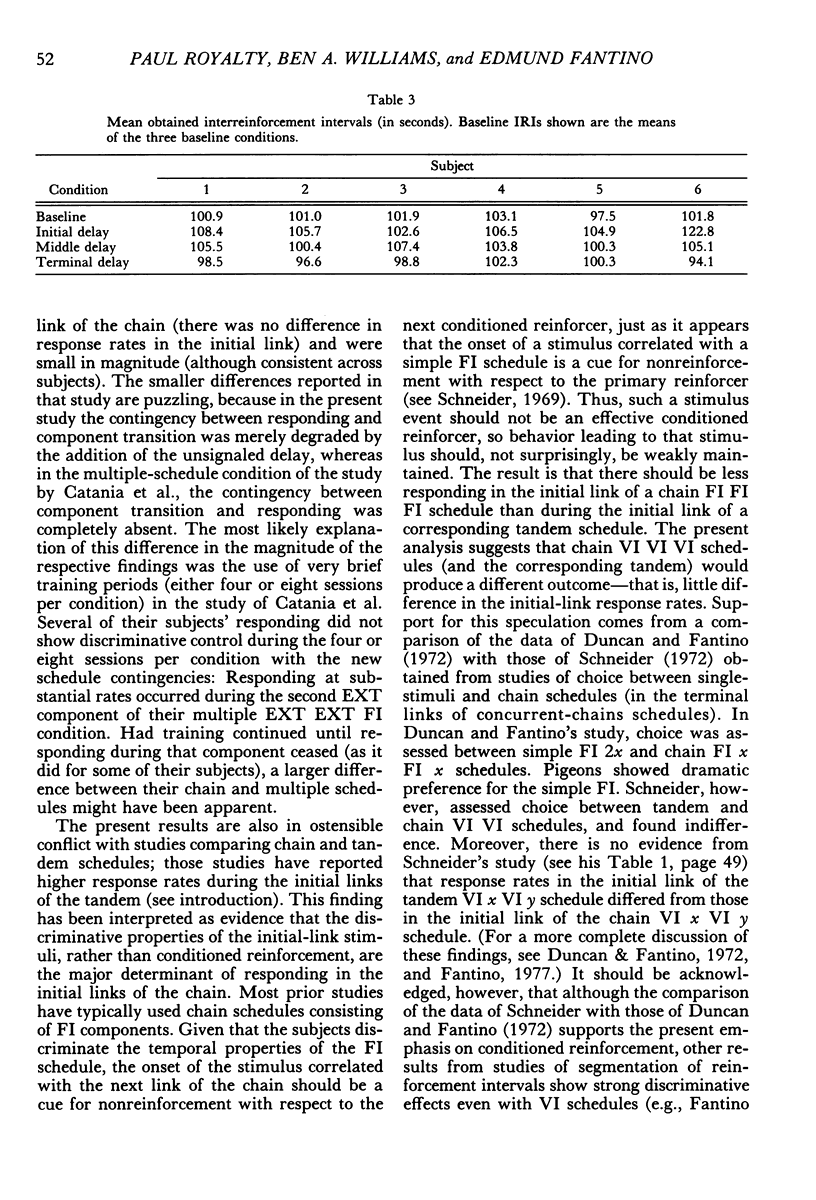
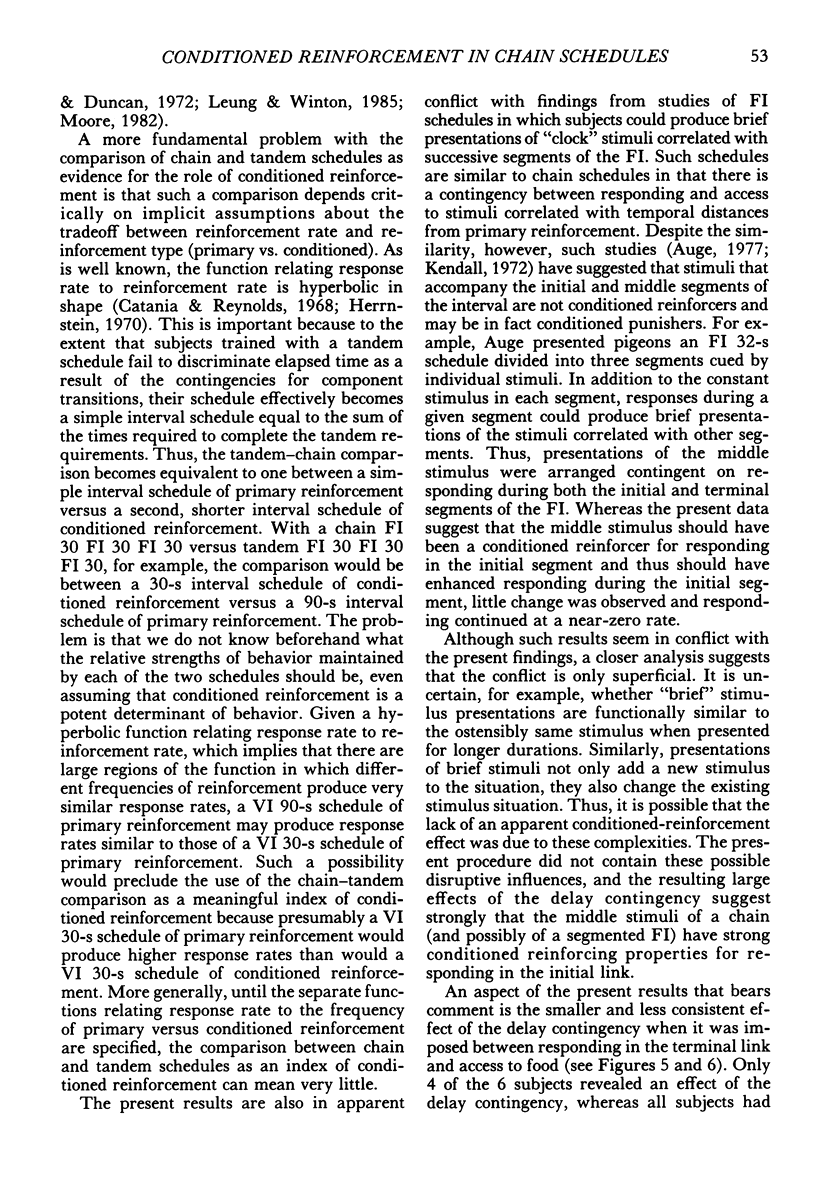
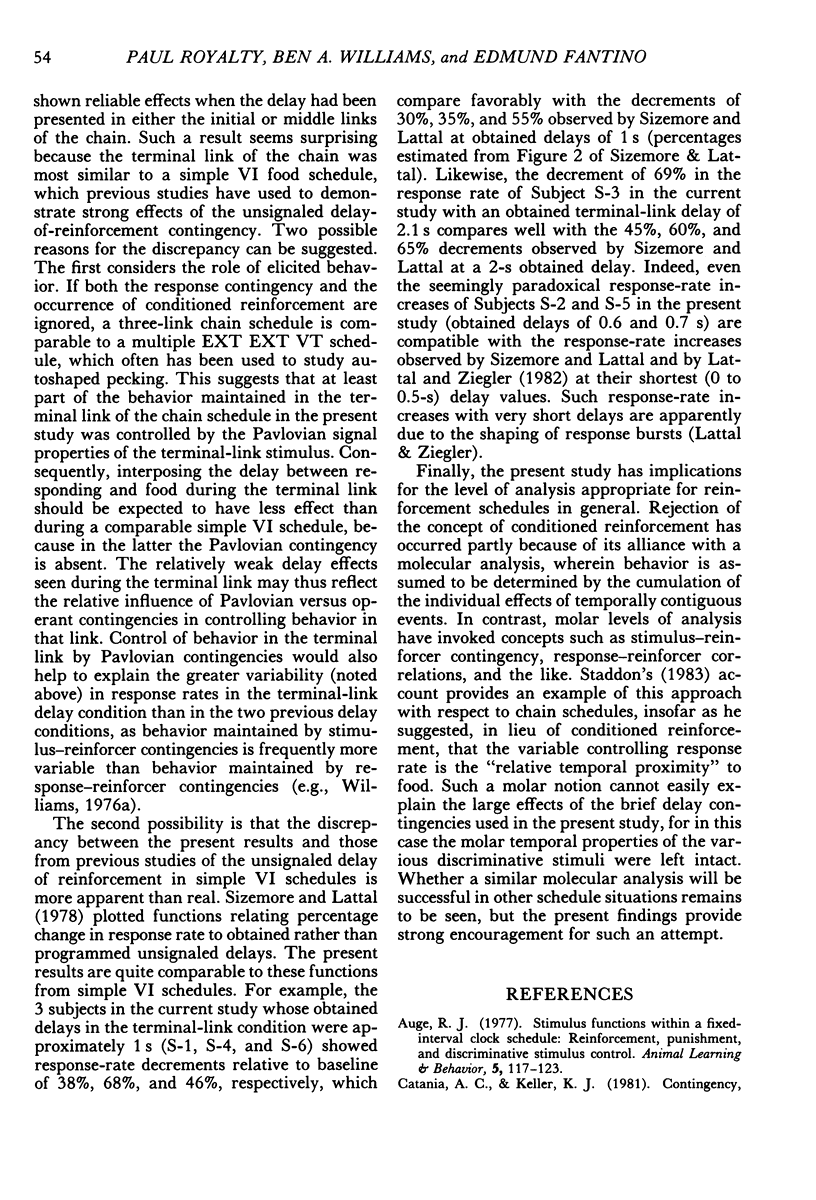
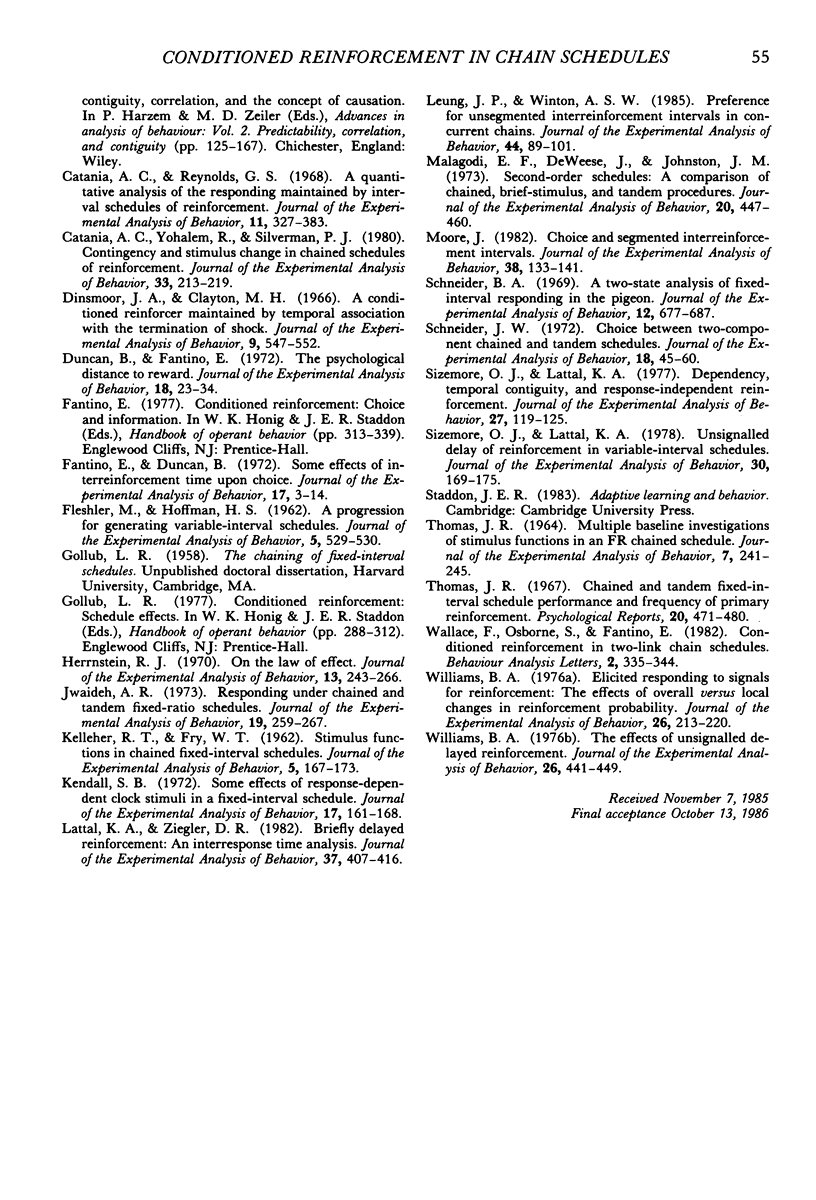
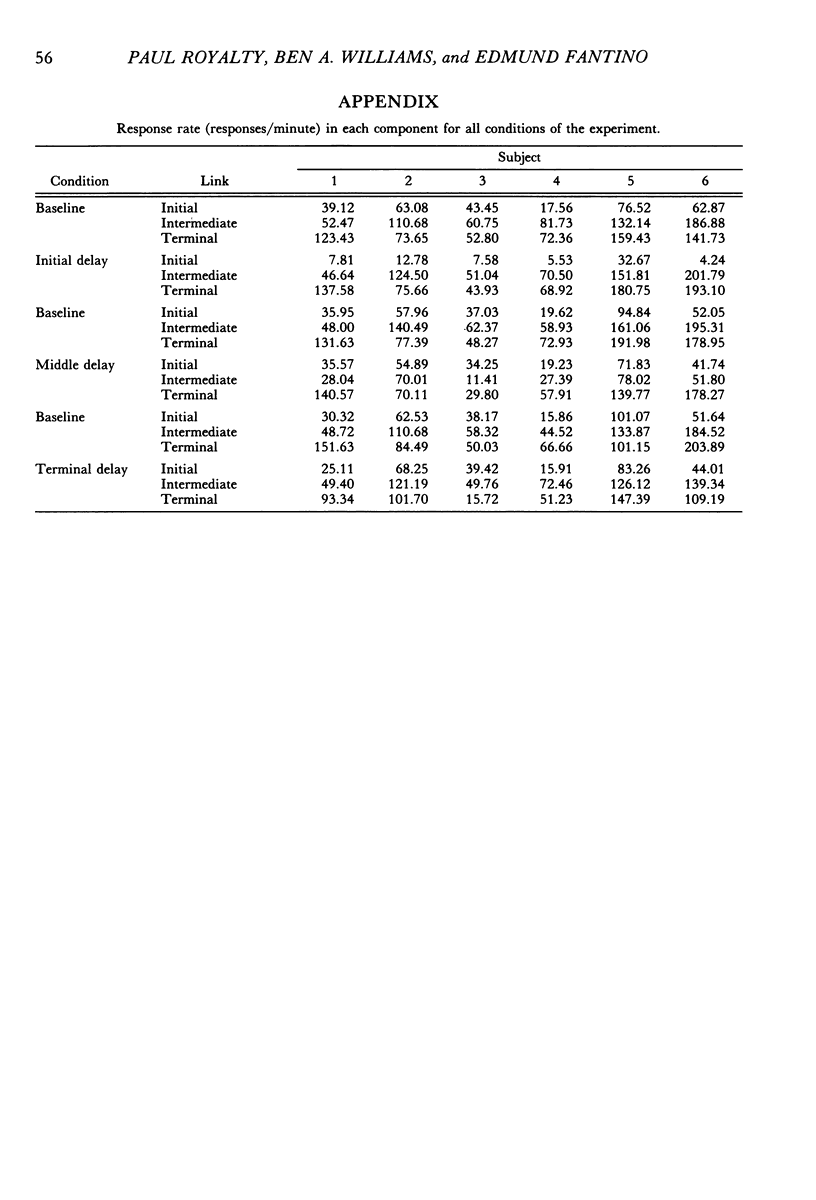
Selected References
These references are in PubMed. This may not be the complete list of references from this article.
- Catania A. C., Reynolds G. S. A quantitative analysis of the responding maintained by interval schedules of reinforcement. J Exp Anal Behav. 1968 May;11(3 Suppl):327–383. doi: 10.1901/jeab.1968.11-s327. [DOI] [PMC free article] [PubMed] [Google Scholar]
- Catania A. C., Yohalem R., Silverman P. J. Contingency and stimulus change in chained schedules of reinforcement. J Exp Anal Behav. 1980 Mar;33(2):213–219. doi: 10.1901/jeab.1980.33-213. [DOI] [PMC free article] [PubMed] [Google Scholar]
- Dinsmoor J. A., Clayton M. H. A conditioned reinforcer maintained by temporal association with the termination of shock. J Exp Anal Behav. 1966 Sep;9(5):547–552. doi: 10.1901/jeab.1966.9-547. [DOI] [PMC free article] [PubMed] [Google Scholar]
- Duncan B., Fantino E. The psychological distance to reward. J Exp Anal Behav. 1972 Jul;18(1):23–34. doi: 10.1901/jeab.1972.18-23. [DOI] [PMC free article] [PubMed] [Google Scholar]
- FLESHLER M., HOFFMAN H. S. A progression for generating variable-interval schedules. J Exp Anal Behav. 1962 Oct;5:529–530. doi: 10.1901/jeab.1962.5-529. [DOI] [PMC free article] [PubMed] [Google Scholar]
- Fantino E., Duncan B. Some effects of interreinforcement time upon choice. J Exp Anal Behav. 1972 Jan;17(1):3–14. doi: 10.1901/jeab.1972.17-3. [DOI] [PMC free article] [PubMed] [Google Scholar]
- Herrnstein R. J. On the law of effect. J Exp Anal Behav. 1970 Mar;13(2):243–266. doi: 10.1901/jeab.1970.13-243. [DOI] [PMC free article] [PubMed] [Google Scholar]
- Jwaideh A. R. Responding under chained and tandem fixed-ratio schedules. J Exp Anal Behav. 1973 Mar;19(2):259–267. doi: 10.1901/jeab.1973.19-259. [DOI] [PMC free article] [PubMed] [Google Scholar]
- KELLEHER R. T., FRY W. T. Stimulus functions in chained fixed-interval schedules. J Exp Anal Behav. 1962 Apr;5:167–173. doi: 10.1901/jeab.1962.5-167. [DOI] [PMC free article] [PubMed] [Google Scholar]
- Kendall S. B. Some effects of response-dependent clock stimuli in a fixed-interval schedule. J Exp Anal Behav. 1972 Mar;17(2):161–168. doi: 10.1901/jeab.1972.17-161. [DOI] [PMC free article] [PubMed] [Google Scholar]
- Lattal K. A., Ziegler D. R. Briefly delayed reinforcement: An interresponse time analysis. J Exp Anal Behav. 1982 May;37(3):407–416. doi: 10.1901/jeab.1982.37-407. [DOI] [PMC free article] [PubMed] [Google Scholar]
- Leung J. P., Winton A. S. Preference for unsegmented interreinforcement intervals in concurrent chains. J Exp Anal Behav. 1985 Jul;44(1):89–101. doi: 10.1901/jeab.1985.44-89. [DOI] [PMC free article] [PubMed] [Google Scholar]
- Malagodi E. F., Deweese J., Johnston J. M. Second-order schedules: a comparison of chained, brief-stimulus, and tandem procedures. J Exp Anal Behav. 1973 Nov;20(3):447–460. doi: 10.1901/jeab.1973.20-447. [DOI] [PMC free article] [PubMed] [Google Scholar]
- Moore J. Choice and segmented interreinforcement intervals. J Exp Anal Behav. 1982 Sep;38(2):133–141. doi: 10.1901/jeab.1982.38-133. [DOI] [PMC free article] [PubMed] [Google Scholar]
- Schneider B. A. A two-state analysis of fixed-interval responding in the pigeon. J Exp Anal Behav. 1969 Sep;12(5):677–687. doi: 10.1901/jeab.1969.12-677. [DOI] [PMC free article] [PubMed] [Google Scholar]
- Schneider J. W. Choice between two-component chained and tandem schedules. J Exp Anal Behav. 1972 Jul;18(1):45–60. doi: 10.1901/jeab.1972.18-45. [DOI] [PMC free article] [PubMed] [Google Scholar]
- Sizemore O. J., Lattal K. A. Dependency, temporal contiguity, and response-independent reinforcement. J Exp Anal Behav. 1977 Jan;27(1):119–125. doi: 10.1901/jeab.1977.27-119. [DOI] [PMC free article] [PubMed] [Google Scholar]
- Sizemore O. J., Lattal K. A. Unsignalled delay of reinforcement in variable-interval schedules. J Exp Anal Behav. 1978 Sep;30(2):169–175. doi: 10.1901/jeab.1978.30-169. [DOI] [PMC free article] [PubMed] [Google Scholar]
- THOMAS J. R. MULTIPLE BASELINE INVESTIGATION OF STIMULUS FUNCTIONS IN AN FR CHAINED SCHEDULE. J Exp Anal Behav. 1964 May;7:241–245. doi: 10.1901/jeab.1964.7-241. [DOI] [PMC free article] [PubMed] [Google Scholar]
- Thomas J. R. Chained and tandem fixed-interval schedule performance and frequency of primary reinforcement. Psychol Rep. 1967 Apr;20(2):471–480. doi: 10.2466/pr0.1967.20.2.471. [DOI] [PubMed] [Google Scholar]
- Williams B. A. Elicited responding to signals for reinforcement: the effects of overall versus local changes in reinforcement probability. J Exp Anal Behav. 1976 Sep;26(2):213–220. doi: 10.1901/jeab.1976.26-213. [DOI] [PMC free article] [PubMed] [Google Scholar]
- Williams B. A. The effects of unsignalled delayed reinforcement. J Exp Anal Behav. 1976 Nov;26(3):441–449. doi: 10.1901/jeab.1976.26-441. [DOI] [PMC free article] [PubMed] [Google Scholar]


